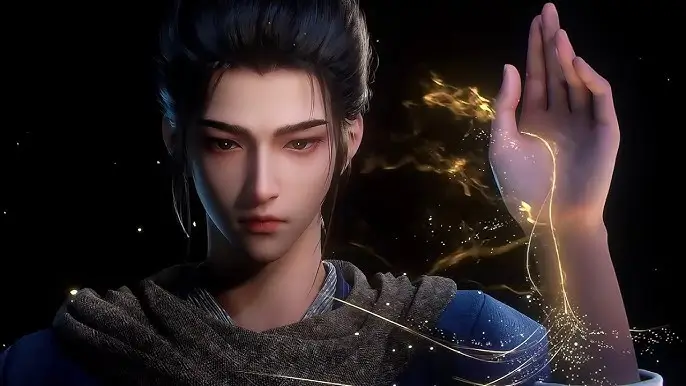In 2025, the donghua community witnessed the rebirth of an iconic title: Fighter of the Destiny 3D. Based on the popular web novel Ze Tian Ji by Mao Ni, this adaptation steps into a new era with cutting-edge 3D animation, deeply emotional storytelling, and a faithful yet refreshed narrative.
This review will cover all aspects of the 2025 version — from story, animation quality, voice acting, character development, fight choreography, and how it compares with its predecessors. If you’re considering adding this series to your watchlist, read on to discover why Fighter of the Destiny 3D is one of 2025’s must-watch donghua!
1. Story Overview
Returning to the Essence of Ze Tian Ji
The 2025 adaptation stays true to the source material. It follows Chen Changsheng, a youth born with a mysterious constitution that leaves him with little time to live. Armed with a resolve to rewrite his fate, he embarks on a journey filled with encounters, friendships, betrayals, and growth.
Differences from Previous Adaptations
Unlike the earlier 2D versions, Fighter of the Destiny 3D 2025 digs deeper into:
- Character psychology
- Political intrigue
- Internal conflicts within factions
Each episode offers layers of story progression, making it a richer experience for both new and returning fans.
2. Animation Quality
Stunning 3D Visuals
This is where the 2025 version truly shines. Fighter of the Destiny 3D employs high-end motion capture, smooth 3D modeling, and photorealistic backgrounds that blend seamlessly with stylized character designs.
Key Highlights:
- Fight scenes are beautifully choreographed with fluid, dynamic camera work.
- Character expressions convey subtle emotions more effectively than ever before.
- Magic and sword techniques are spectacularly animated, using particle effects that immerse the viewer in every battle.
Comparison with Other 2025 Donghua
When placed alongside other 2025 releases like Battle Through the Heavens Season 7 or Against the Gods, Fighter of the Destiny holds its own, particularly for its highly detailed environmental art and innovative use of lighting.
3. Character Development
Chen Changsheng: A Deeper Hero
No longer just a stoic protagonist, Chen Changsheng’s internal struggles are explored deeply. His desperation, hope, and silent determination are portrayed with nuance.
Xu Yourong: More Than a Love Interest
Xu Yourong, the heroine, receives significant character expansion. Her own personal challenges, moral dilemmas, and choices are integral to the plot rather than mere accessories to the hero’s journey.
Strong Supporting Cast
Characters like Tang Thirty-Six, Luo Luo, and Qiushan Jun are developed thoroughly, each with distinct arcs that tie seamlessly into the main narrative.
4. Voice Acting and Sound Design
Stellar Voice Performance
The voice cast, including renowned talents from the Chinese animation industry, delivers impeccable performances:
- Emotional scenes hit harder.
- Comedic moments land more naturally.
Atmospheric Soundtrack
The soundtrack features a mix of traditional Chinese instruments and modern orchestration, elevating emotional beats and action sequences alike.
5. Themes and Symbolism
- Destiny vs Free Will: Central to the story is the struggle against fate — a universal theme executed with cultural depth.
- Loyalty and Betrayal: No relationship is simple; alliances shift naturally based on character motivations.
- Personal Growth: Each character, especially Chen Changsheng, embodies the transformative power of perseverance.
6. Fight Choreography
The battles are not just about flashiness. Every move carries strategic depth:
- Sword fights are swift, elegant, yet grounded in martial arts philosophy.
- Magical duels feel weighty and consequential, with intricate spell mechanics.
- Group battles are chaotic yet easy to follow thanks to brilliant direction.
7. World-Building and Lore
Fighter of the Destiny 3D meticulously expands its universe:
- Detailed maps of the Divine Capital.
- Rich lore about sects, bloodlines, and the hidden history of the continent.
- Mythical beasts, sacred artifacts, and ancient secrets are unveiled progressively.
This careful pacing ensures the audience stays invested without being overwhelmed.
8. Pacing and Episode Structure
Each episode strikes a balance:
- Plot advancement
- Character introspection
- World-building tidbits
- Thrilling action
Cliffhangers are expertly placed, making it addictive to watch without feeling cheap or rushed.
9. Art Style and Character Design
The updated character designs respect the original while modernizing aesthetics:
- More realistic armor and costume details
- Refined facial models
- Distinct visual differences between clans, sects, and nations
Overall, it feels like a living, breathing world.
10. Comparison with Other Adaptations
Fighter of the Destiny 2017 vs Fighter of the Destiny 2025
| Aspect | 2017 Version | 2025 Version |
|---|---|---|
| Animation Style | 2D, traditional | High-quality 3D |
| Story Faithfulness | Moderate | High |
| Character Depth | Basic | Deep and nuanced |
| Fight Scenes | Good | Outstanding |
The 2025 version clearly improves on every aspect, offering a definitive adaptation of the beloved novel.
Conclusion
Fighter of the Destiny 3D 2025 isn’t just a remake — it’s a renaissance. With breathtaking animation, deeper storytelling, and a more faithful representation of Mao Ni’s masterpiece, it sets a new standard for donghua adaptations.
Whether you’re a veteran fan or a newcomer to Chinese animation, this donghua promises an unforgettable journey through fate, growth, and the endless possibilities of the human spirit.
Final Verdict
⭐ 9.5/10 — Highly Recommended
Pros:
- Stunning visuals
- Deep character development
- Faithful adaptation
- Emotional storytelling
- High replay value
Cons:
- Some slow pacing in middle episodes
- Requires patience for world-building
